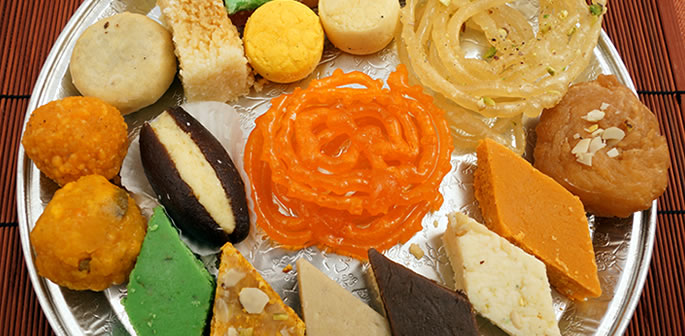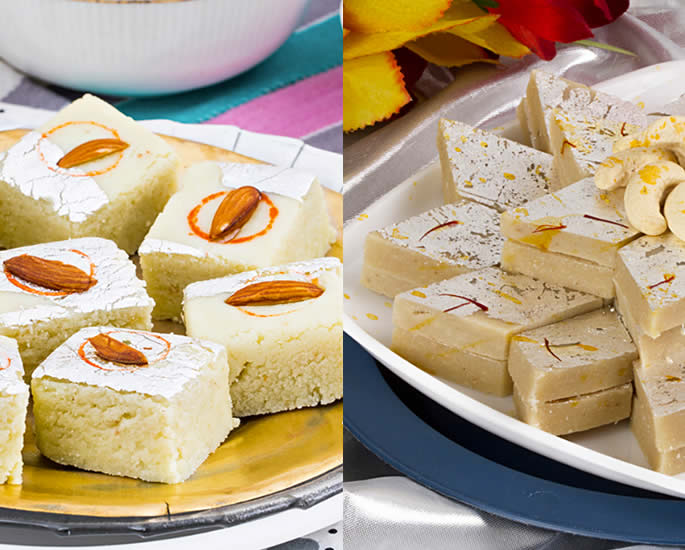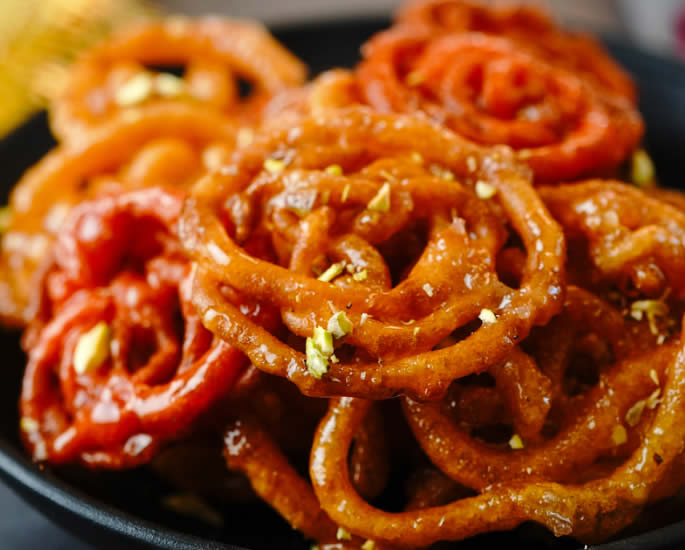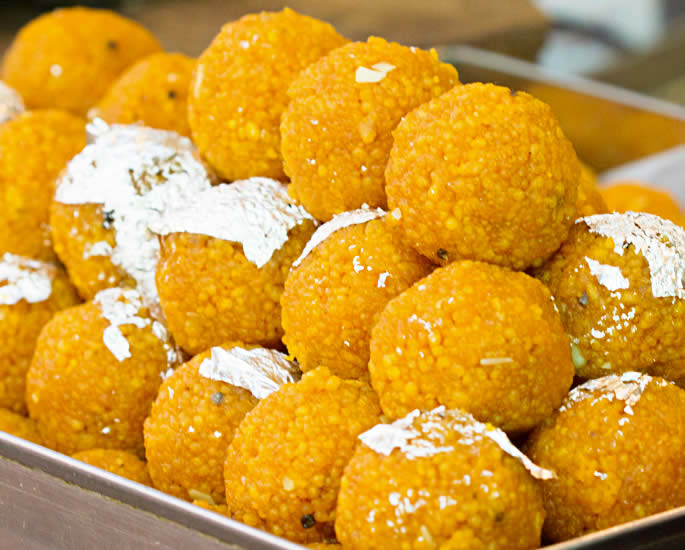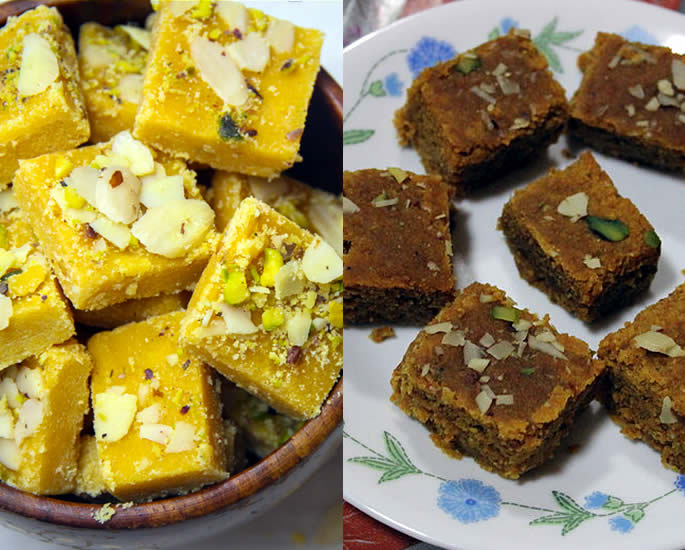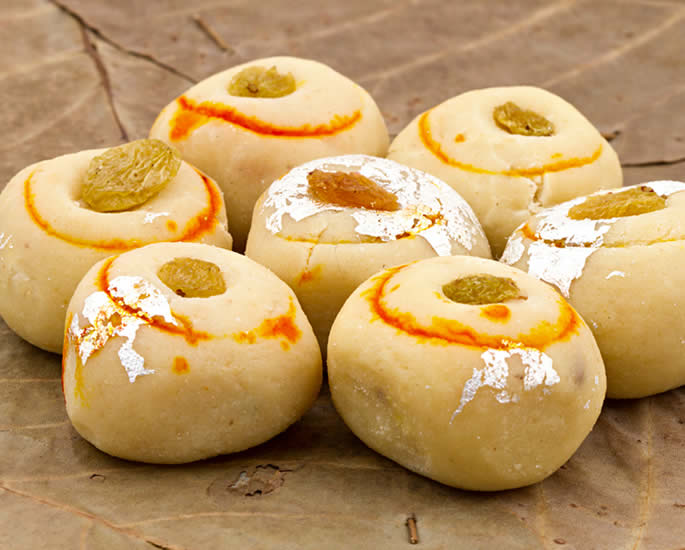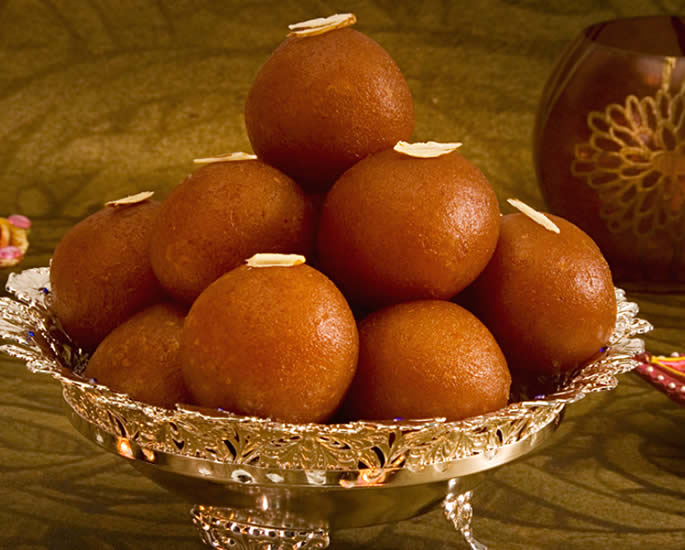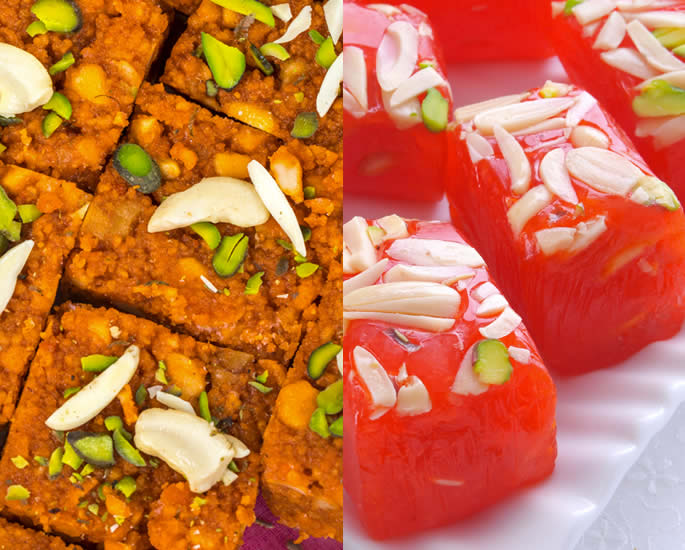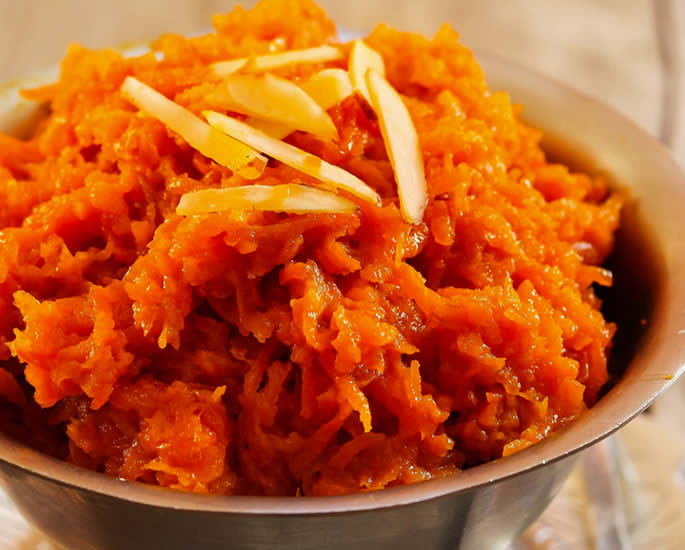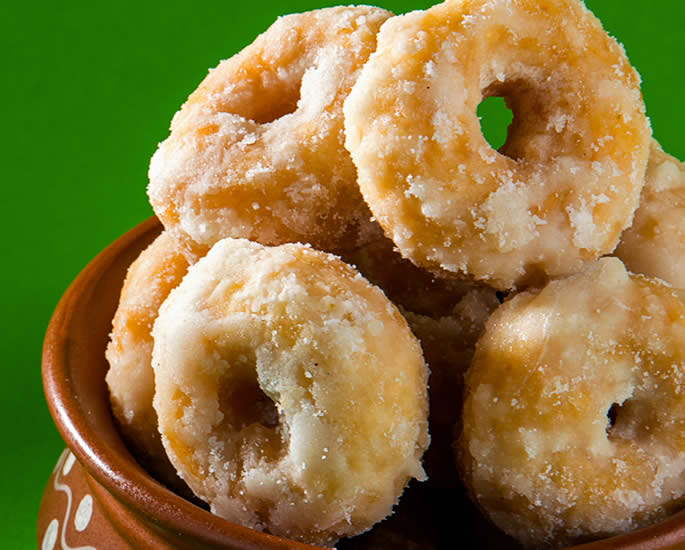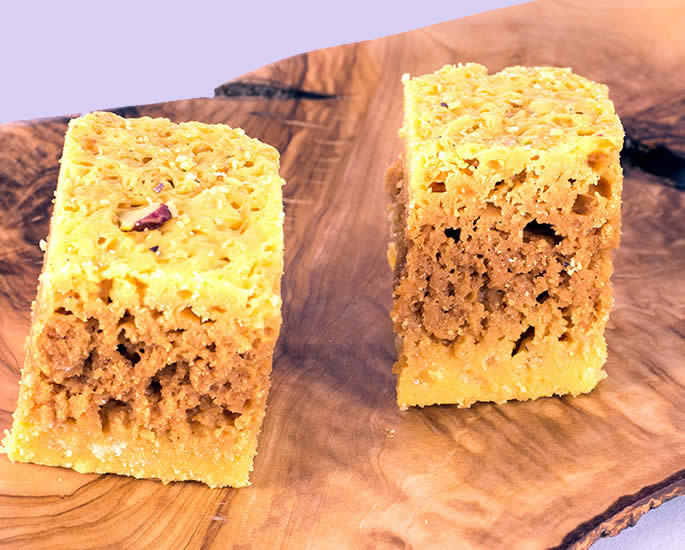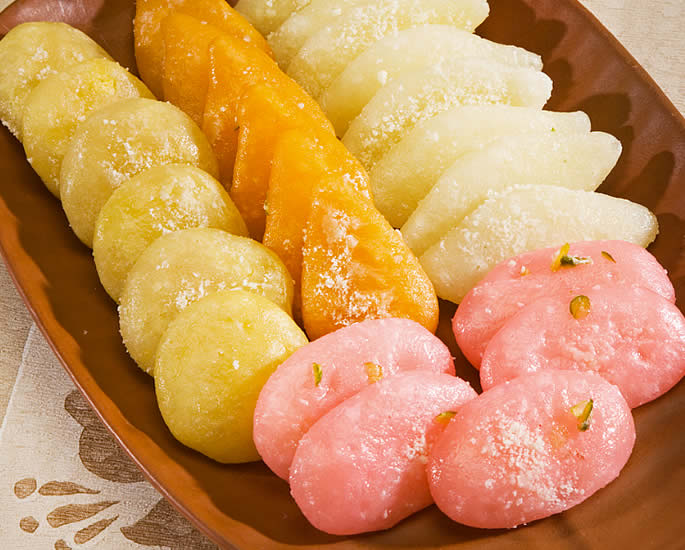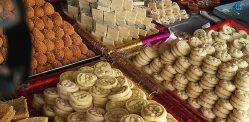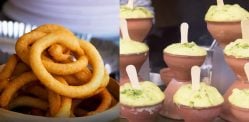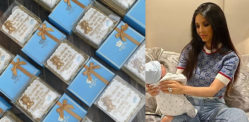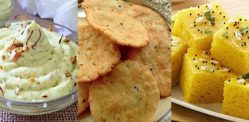Many of the recipes for the sweets originated centuries ago
Going past an Indian sweet shop do you often wonder what all those different sweets are? How they are made or what are their ingredients?
We’ve decided to put a guide together to help you find out more about these delicious sweet delights from South Asia.
Indian sweets are collectively called Mithai which is derived from the word mitha which means sweet.
There are many varieties of specific types of Indian sweets which are usually a derivative of the original recipe for the sweet.
Let’s look at the most common types of Mithai that people consume especially at special occasions like weddings, parties and functions, and festivals like Diwali, Eid and Vaisakhi.
Many of the recipes for the sweets originated centuries ago with many of the sweets being cooked at home.
Some families do still cook such sweets at home especially if they have elders in the family who know how to make them.
However, the majority of people buy them at “sweet centres” or restaurants as take-outs or order them as gifts to be given at specific events like a wedding.
Here are some popular Indian sweets available at most “sweet centres” in major towns and cities in the UK such as Leicester, Birmingham, Southall, Glasgow, Wembley, Gravesend, Bradford and Manchester.
Barfi
Sometimes called Burfi or Barfee, has its named derived from the Persian word ‘barf’ which means snow since barfi is similar to ice/snow in appearance.
This sweet is made from condensed milk, cream and sugar. The simple type is usually of white or creamy colour and has a thick sweet texture.
It is usually available in small rectangles or diamond shapes. This particular sweet has many varieties usually due to additional ingredients. Other types include:
- Kaju Barfi which has course ground cashew nuts as a topping on or in the sweet
- Pista Barfi which has course ground pistachios in it
- Khoya Barfi which is made using buffalo milk
- Fruit Barfi which contains small pieces of dried fruit
- Coconut Barfi which contains desiccated coconut and comes in different colours
- Chocolate Barfi which has a layer of milk chocolate on the top of the barfi
Barfi can be coated with a thin layer of edible metallic leaf known as vark and can also contain spices such as cardamom to give it an enhanced flavour.
Jalebi
Popular during the festival of Diwali or other festivals, this is a sticky chewy sweet which is usually of an orange colour.
It is typically made from highly refined wheat flour called maida, saffron, ghee and sugar.
A deep fryer or wok filled with very hot oil is used to make it.
The mixture is usually squeezed from a handheld cone directly into the hot oil, allowing it to deep fry.
The resulting shapes are circular or pretzel, and they are then soaked in syrup to give them a sticky texture.
Citric acid or lime juice is sometimes added to the syrup, as well as rosewater or other flavours such as kewra water.
It can be eaten warm or cold. Some people even have the sweet served in milk.
The origin of the sweet is from the middle east, where it’s called Zlebia.
Therefore, it’s likely that during the period of Muslim rule in India, this dish was introduced in the country. Subsequently, replacing the Z with J in its name.
Ladoo
Also known as Laddu, this sweet is one of the most well-known and universal Indian sweets.
It is one sweet that is made by households more commonly compared to the rest of the sweets. They are dark yellow in colour and shaped about the size of a golf ball.
Ladoos are typically made from gram flour, semolina, ghee, sugar, milk, cardamom powder, chopped almonds and pistachios, and vark to decorate. Other flours are sometimes used too.
They are usually eaten on their own and usually, you cannot eat more than about two or three due to their thick sweet and dense texture.
There are a few varieties of this sweet such as motichoor laddoo, boondi laddoo and atta laddoo.
Their origin of the sweet tracks back to Gujurat in the 12th century.
Besan Burfi & Mohanthal
Besan is a fundamental component in many Indian desserts, including besan burfi or besan barfi.
Besan burfi is a traditional Indian dessert created by combining besan flour, ghee (clarified butter), and sugar till a fudgy consistency develops.
After that, the mixture is sliced into diamond shapes and topped with nuts. This delicious dessert is ideal for special events and festivities.
Besan is also utilised in the preparation of the classic Indian dessert Mohanthal.
Mohanthal is a popular Indian dish made of besan, ghee, sugar, and milk.
Besan is roasted in ghee and then blended with sugar syrup to make a thick batter.
The mixture is then placed in a tray and topped with nuts like almonds and pistachios.
Mohanthal is a rich and delicious dessert that is frequently offered on special occasions and festivals.
Peda
Peda is a sweet which is circular and is like soft milk fudge. Its main ingredients are khoya, sugar and traditional flavourings including cardamom seeds, pistachio nuts and saffron.
Full-fat milk or buffalo milk is used for the khoya.
The milk is used to first make soft cheese as the base for the khoya dough and then the rest of the ingredients are added while it is still hot.
Pedas are commonly made in two colours which tend to be white and yellow.
Gulab Jamun
This is a deep and sweet-tasting mithai and is a very popular entity from the selection of Indian sweets.
It is made from khoya, mixed together with flour and sugar, and then deep fried. Either in ball shapes or rounded rectangular shapes.
Once fried and brown, it is coated all over with a sugar syrup flavoured with cardamom seeds and rosewater, kewra or saffron. Desiccated coconut is often used as a finishing touch.
You can get mixture packs to make gulab jamun easily now at home.
The word ‘gulab jamun’ comes from Persia. Gulab, ‘rose’ refers to the rosewater-scented syrup and the Hindi word ‘jamun.’
Halwa
Halwa, also called halva, halvah, helwa, or halvah is a sweet usually made with semolina or wheat and can include nuts.
Traditional halwa uses khoya milk. Ingredients for halwa include ghee, milk, sweetened condensed milk and flour or semolina.
There are many different types of halwa available in sweet shops. These include:
- Pista Halwa which contains pistachios
- Gajjar Halwa which is carrot-based
- Muscat Halwa is a satin-smooth textured halwa made from a combination of sugar and flour, then flavoured with the finest pistachio nuts, pine nuts and blanched almonds. It can look a little like Turkish Delight in the shops
- Calicut Halwa or Kozhikode Halwa is like Muscat Halwa and is a popular sweet from Kerela. It can include flavours like chilli and passion fruit and has a Turkish Delight like appearance.
Halwa appears on many shelves in shops displaying popular Indian sweets.
Gajrela
This sweet hails from the Punjab region in India and Pakistan.
It is a wonderfully soft and tasty sweet, which is a blend of finely shredded carrots, spices, and heavy cream.
The ingredients used to make gajrela are whole shredded carrots, cream milk, sugar, cardamom powder, saffron, ghee and chopped almonds and pistachio used for the garnish.
The sweet is available in small rectangular pieces at a sweet shop or can be served in a dish, and is highly recommended.
Balushahi
This is a traditional sweet from northern India, Pakistan and Nepal.
It is similar to a glazed doughnut but usually of a harder nature.
Balushahi is made of maida (corn) flour and is deep-fried in clarified butter and then dipped in sugar syrup.
A similar sweet is also called Badushah made from a stiff dough made with all-purpose flour, ghee and a pinch of baking soda, and dipped in sweet syrup.
They are not very sweet but are tasty with a slightly flaky texture.
Mesoor
This sweet has a traditional, golden and cream honeycomb texture. It is made from gram flour (besan) and pure butter ghee (clarified butter), oil and sugar.
If cooked properly it is not too hard or too soft like barfi and it should be darker brown colour in the middle compared to its edges.
Mysore Pak is a variant of this sweet which has the characteristic hard and crispy texture while preserving the same savoury taste.
It is one of the harder textured Indian sweets and produces a delicious, crunchy and crumbly explosion in your mouth when eaten.
Cham Cham
This is a sweet similar to gulab jamun but comes in different shapes. It is multicoloured, mainly light pink, orange, yellow, and white.
It originates from Bangladesh but is very popular in Indian sweet shops. It is also known as Rasgulla.
Cham cham is made with full cream milk, flour, cream, sugar, rose water, lemon juice and desiccated coconut used to coat the sweet sticky balls.
The milk is used to make cheese which is used as part of the recipe to make this sweet.
There are many more varieties of Indian sweets you will see in a sweet shop and some will vary depending on the region of India.
For example, a Punjabi sweet shop will not have all the sweets a Gujarati sweet shop will have. So, do not hesitate to explore the variations.
When buying sweets from an Indian sweet shop you can ask for a box which comes in large, medium or small sizes. Then you can simply pick and mix pieces of the sweets you wish to buy and try.
It’s a good idea to try different sweets because you never know you might discover a new favourite!
Indian sweets do come with a health warning though because they can be quite high in fat and calories due to the rich ingredients and high levels of sugar used in most of them. Therefore, if you are waistline conscious, have them as a treat rather than too frequently.
Do let us know which ones are your favourites in our Indian sweets guide poll below!



















































